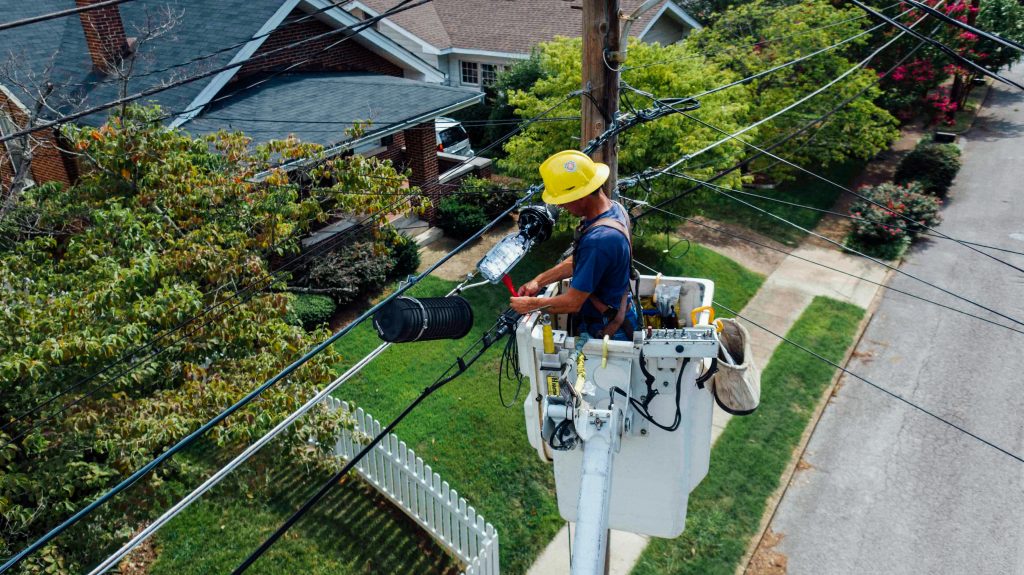 Contracting and subcontracting in the construction industry are standard practices. However, they can create several challenges when a worker is injured. What happens, for instance, when the employee of a subcontractor is injured by a device owned and operated by a municipal government unconnected to the construction project at hand? The Louisiana First Circuit Court of Appeal recently addressed this question when a worker was injured by an overhead power line.
Contracting and subcontracting in the construction industry are standard practices. However, they can create several challenges when a worker is injured. What happens, for instance, when the employee of a subcontractor is injured by a device owned and operated by a municipal government unconnected to the construction project at hand? The Louisiana First Circuit Court of Appeal recently addressed this question when a worker was injured by an overhead power line.
Brendan Sharp was employed by RedIron Construction, a Legacy Construction Services subcontractor. Legacy had been hired by Cummins Mid-South Diesel in Morgan City to construct a building, and Legacy brought RedIron in to install metal siding on the structure’s exterior. Sharp’s injury occurred when he touched one of the metal siding panels to a live overhead power line owned by Morgan City.
Sharp sued for damages, naming only Morgan City as a defendant. Morgan City then filed a third-party demand against both Legacy and RedIron, arguing that Morgan City itself was not liable for any damages due to Legacy’s and RedIron’s failure to comply with Louisiana’s Overhead Power Line Safety Act (OPLSA). La. R.S. 45:141. RedIron and Legacy then filed motions for summary judgment, contending that they were, in fact, in compliance with OPLSA.
Morgan City opposed the summary judgment motions, arguing that the companies failed to negotiate the necessary safety arrangements with Morgan City before commencing work around the overhead power line as required by OPLSA. The trial court concluded that Legacy and RedIron acted by OPLSA and granted both motions for summary judgment. Morgan City, once again the sole defendant, appealed.
OPLSA provides that a party can only work within ten feet of any high voltage overhead power line when the entity looking to perform the work contacts the power line owner, and both parties agree on safety protocol. If the entity performing the work then violates other provisions of OPLSA, that entity is liable to the owner of the power line for any resulting damages. La. R.S. 45:144.
The issue for the Louisiana First Circuit Court of Appeal was whether Morgan City provided sufficient evidence to show that a genuine issue of material fact existed over whether RedIron and Legacy were in compliance with OPLSA. Morgan City argued that the construction firms were out of compliance because they failed to adequately inform the City of the work being done, did not contact third-party safety experts to confirm the protocol was safe, and failed to follow their safety regulations. Legacy and RedIron relied on the deposition of Mark Broussard, the senior lineman for Morgan City, to show that before the work, the companies and the City discussed the work plan, agreed to use guy guards for safety, and ensured those guards were in place at the time of the accident.
The Court of Appeal found the City’s arguments unpersuasive. In fact, the “failures” cited by the City either concerned actions that were not directly required by OPLSA or were contradicted by the evidence showing that a mutual agreement between the construction firms and the City had been reached. Accordingly, the Court affirmed the trial court’s dismissal of Legacy and RedIron from the lawsuit.
This case demonstrates the complexities of litigation when multiple parties are involved. Defendants will likely employ any theory available to show that another party was responsible for the damages. The resulting dispute can be even more contentious when there is no relevant statute like the OPLSA to set specific standards for compliance that the court can use to determine the parties’ responsibilities. For this reason, it is crucial for anyone injured in a situation where more than one party could be at fault to obtain counsel experienced in litigating against multiple defendants.
Additional Sources: SHARP v. MORGAN CITY
Written by Berniard Law Firm
Additional Berniard Law Firm Articles on Workers Compensation: Contractor Not Liable for Electrocution Death in St. Tammany Parish
 Louisiana Personal Injury Lawyer Blog
Louisiana Personal Injury Lawyer Blog

